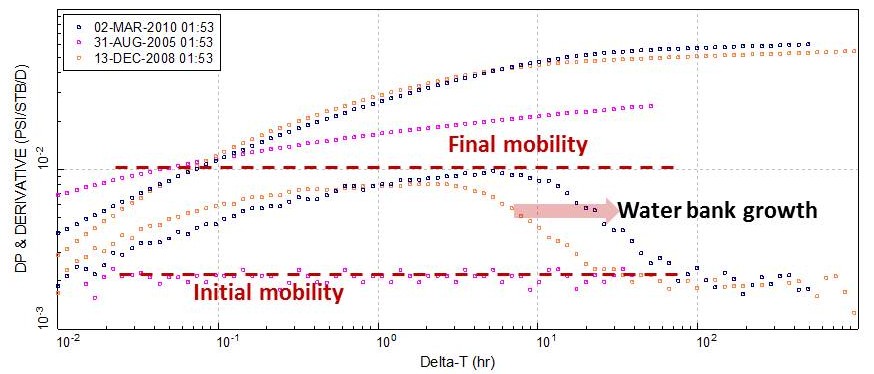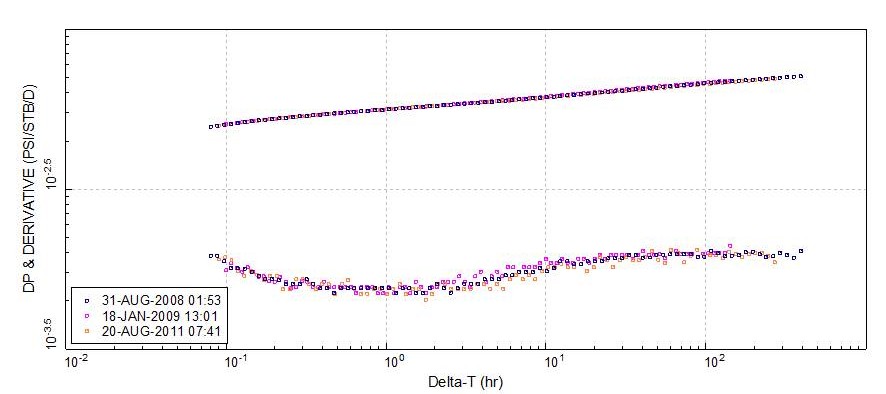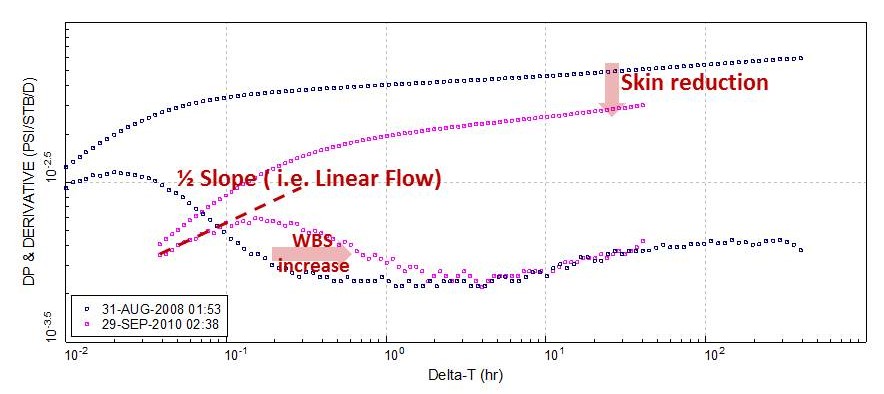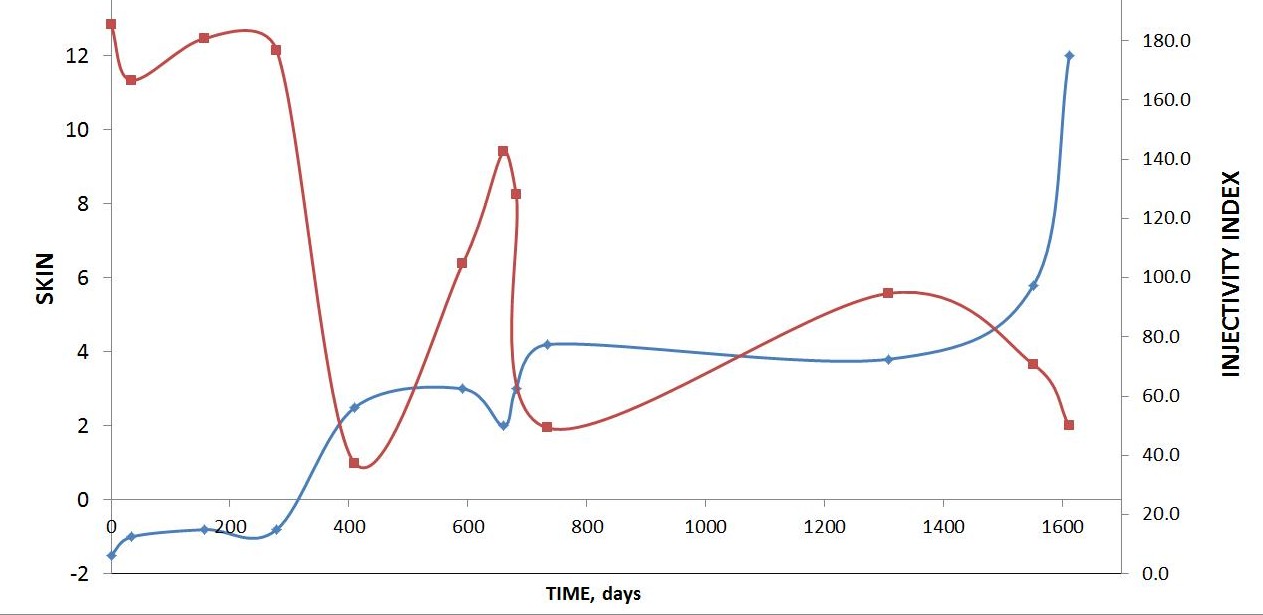by Bill Roberts, President, OPC USA
The benefits of pressure transient analysis (PTA) for production wells is widely recognised. However, the need to undertake PTA on water injection wells can sometimes be overlooked by operators. Since wellhead pressure and injection rate are very often measured continuously, there is a wealth of data that can be reaped from PTA interpretation of injection wells and shown as a variation with time such as :-
• Mechanical Skin
• Injectivity Index
• Average reservoir pressure
• Fracture closing pressure
• Information about the flood front advance
With this information, remedial action can be taken such as stimulation, reperforation or even the recommendation of a production log to further understand the performance change. In the last decade the study of Injection wells has become one of the industry’s hot topics. This has been a direct consequence of the increasing number of enhanced oil recovery projects (EOR). The market force for efficient reservoir management has always been in place, but now it must also take into account injection well performance, waterflooding strategies, water disposal needs and injection facilities. Throughout the remainder of the article some examples are shown which provide an insight to the kind of information that can be obtained by doing a robust PTA surveillance analysis.
Water Bank Growth and pressure support around the wellbore
Characterization of water bank growth and pressure support around the wellbore relates to overall water flooding and displacement efficiency. From the cumulative injected water volumes a theoretical injected bank size can be obtained as long as the net injection thickness is known. The growth of the theoretical bank size is then compared to the apparent inner bank growth of the derivative.
For a water injection well injecting directly into the oil zone, this approach gives an immediate understanding of how the water bank is behaving in the reservoir. If discrepancies are observed between theoretical and apparent water bank sizes it must mean that the water
bank growth is not homogenous within the reservoir. This could be due to a strong relative permeability contrast, existing pressure gradient or simply due to the presence of heterogeneities and/or boundaries.
Understanding Changes in Temperature effects.
Reservoir temperature affects viscosity which is directly related to the mobility. Since the temperature of injection water can change throughout the life time of a field (if produced water is added to the total injection yield), it is important to understand the impact that temperature changes will have in the injection performance and in the overall reservoir. An example is shown in the following plot
that illustrates the effect of fast warming up of injection water. The thinking would be that cold injected water would have a higher viscosity than reservoir water, and therefore a change in mobility might be seen. The reality shows a different picture. After several millions of injected cold water barrels, the change in the derivative response is negligible. How could this be if the inner water bank is supposed to have a different mobility via a viscosity change?
The answer is that the viscosity difference dissipates as soon as the injected water is warmed up. And the injected water is warmed up very quickly. Both the reservoir and the aquifer act as a massive heat exchanger that warms up the injected water to reservoir temperatures at a very fast rate (analogue to a geothermal energy system). Water injection into an aquifer does not present a significant contrast in relative permeability as long as water properties are not very dissimilar. It is concluded that wells that inject water into an aquifer will maintain almost identical derivatives until the moment the injected water front starts interacting with an oil leg with a contrasting mobility.
Diagnosing variations in Injectivity Index
One of the issues that always crops up when doing Injection Surveillance PTA is the diagnostic of variations in the injectivity index (II). Is the injector performing as expected? Why or why not? The truth is that the majority of events that occur to injectors will affect their performance in one way or another. For example, any kind of Skin increase or loss of injection reservoir interval will reduce the Injectivity Index; on the other hand the appearance of fractures will enhance it. All in all, injectivity index is one of the main parameters to monitor when doing PTA Surveillance of Injection wells. Some examples are illustrated below.
The plot above shows two fall-offs (FO) carried out in the same well. The first FO (blue) was done soon after the well was put into injection. The pink FO was carried out two year afterwards after relatively continuous injection: The presence of a ½ slope in the early time of the latter FO stands out immediately as the appearance of a fracture. This is reasonable taking into account the changing thermal rock properties around the well and the prolonged injection prior to it. As shown in the example above a fracture tends to increase wellbore storage duration (WBS) as per an increase of compressible volume during shut-in. In addition, the development of a fracture creates an improvement in Skin (evidenced by the decrease in separation between pressure and derivative curves when comparing the final fall-off with the initial one). This reduction in Skin led to an improvement of the Injectivity Index of the well. The plot below shows a clear example of how changing Skin over the life of a well influences the Injectivity Index.

Bill Roberts is a reservoir engineer with over 32 years’ broad-based international experience in well testing, reservoir simulation, petrophysics, reserves estimation, prospect evaluation, field development and training. Since 2003 he has specialized in well testing and reservoir surveillance with permanent downhole gauges on producing fields, and since 2005 has taught well test analysis for the Master’s program, Institut Français du Pétrole, Paris.
Contact Bill on +1 713 973 2151 or by email .




